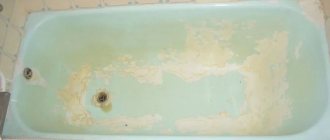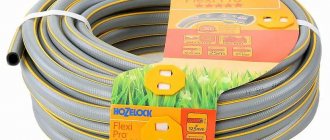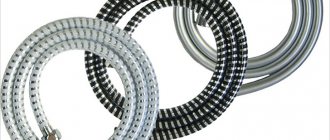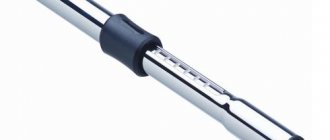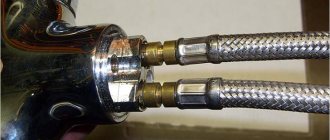The onset of cold weather does not always end the summer season in the garden. In private homes, as a rule, work is in full swing all year round. Often the home owner has the problem of choosing a hose made of frost-resistant materials that will not break in the cold and will last for quite a long time. This article will discuss such products and the subtleties of their selection.
Peculiarities
The frost-resistant water hose is distinguished by its ability to withstand low temperatures without damaging its own material. These products have many distinctive characteristics, thanks to which frost-resistant hoses are very popular among buyers. For example, they are characterized by reliability in operation and are resistant to mechanical damage (impact), pressure, and abrasive wear. In addition, such products, depending on the variety, may be resistant to UV radiation and the effects of various chemical compounds.
These are particularly flexible and durable hoses that do not change their structure at both low and high temperatures. Modifications can consist of three layers, through each of which the hose receives the necessary properties. They do an excellent job of pumping water. However, depending on the variety, not every product can withstand severe frost.
have proven themselves well , as well as suction modifications that can be laid underground. Such products are distinguished by the presence of reinforcing rings, while the material is resistant to the appearance and spread of rust. Hose materials may contain special additives that increase elasticity. This is what explains the resistance of hoses to cracking and bursting.
What happens to water
To conduct more visual research, it was decided to leave one of the hoses filled with water outside for two days. After this, a chemical analysis of the water was carried out. Phthalates and bisphenol A were found in it (a moderately dangerous substance that, in large doses, causes damage to the mucous membrane of the eyes, respiratory tract, diabetes and even cancer). And although the latter has long been widely used even in the food industry, in the sun its maximum permissible concentration has increased several times, posing a real threat to anyone who wanted to drink water from a hose.
As a general rule, there should be no water in it during storage of the hose - microorganisms actively begin to multiply in it
Does this mean that you should completely abandon the use of garden hoses, because rarely does any summer resident have equipment for conducting chemical analyses. Not at all. The fact is that certain chemical compounds (even conditionally harmful ones) are constantly present in our lives. They can be found in frozen pizza slices, yogurt containers and even children's toys. In addition, increased levels of antimony, phthalates or other substances in the tissues of plants that were watered from plastic hoses have not yet been confirmed.
Purpose
Today, such products are used both for watering the garden and for other purposes.
- For example, some of the varieties are used for filling a skating rink , others are needed for carrying drinking water.
- Some options are used for pumping petroleum products , as well as various types of oils.
- You can use a frost-resistant hose to clean the sewer . In addition, these products have found application for firefighting needs , and they are also used by vacuum cleaners.
No. 1. Defrosting the pipe using a hair dryer or blowtorch
If the outer part of the pipe, which is within reach, is frozen , then the task is greatly simplified. It is enough just to expose the frozen area to external heating, and for this you can use:
- hair dryer, regular or construction;
- heating cable;
- heating pad;
- electric blanket.
If the pipe is metal, then you can also use the following heat sources:
- gas-burner;
- blowtorch;
- homemade torch.
The principle is the same in all cases. Heat is applied to the frozen area. If it’s a heating pad, then it’s applied; if it’s a cable, it’s used to wrap it around the pipe and plugged into the network; if it’s a burner or blowtorch, then the flame is directed into the pipe area, but with a hairdryer, everything is clear. An old blanket or thick cloth can be placed over the heating pad, heating cable, and thermal blanket to help retain heat.
It is important to open the water tap before starting work so that thawed water can flow out of the pipe calmly. The heater or heating boiler is turned off during this time.
Criterias of choice
When going to the store to buy a frost-resistant hose for irrigation, you need to take into account a number of nuances. For example, key ones will be water pressure, frequency of use, and the size of the area being treated. Another key selection criterion will be the material of the product. Today there are different hoses on sale: rubber varieties are not afraid of frost, as well as durite modifications.
Rubber models are quite flexible and are not affected by negative temperatures. Some rubber hoses consist of four layers, which affects their weight. Such products can withstand a pressure of 40 bar, their service life sometimes reaches 20 years.
If it is not needed, you will have to store a heavy hose in the utility room.
Reinforced or three-layer analogues may have an inner layer of dark-colored PVC. This feature makes the hose resistant to UV rays. Algae does not grow inside such pipes. At the same time, the three-layer version is able to cope with a pressure of 33 bar. Under the influence of low temperature, the hose becomes rigid, but does not deform.
Rating of watering hoses
The hoses on sale for watering in the country differ in price, manufacturer, and stated technical characteristics. When selecting the best products, we consulted with experienced gardeners, gardeners, farmers, and studied many reviews on forums and communities.
We assessed the leaders in terms of demand in stores and reviews on a number of parameters:
- Materials of construction;
- Length, diameter, wall thickness;
- Number of layers;
- Availability of reinforcement;
- Permissible pressure limit;
- Operating temperature range;
- Environmentally friendly.
The result of a comprehensive study was a top list of 9 positions. These are 5 nominees made of polyvinyl chloride, 2 of rubber and the same number of silicone. Monitoring reviews on the Internet showed the strengths and weaknesses of each product and helped weed out models of dubious quality.
The best sprinklers
Characteristics of various modifications
On average, frost-resistant hoses can withstand a temperature range from -40 to +60°C. However, on sale you can find options with a lower negative temperature of no more than -20°C.
Structures can be ordinary or reinforced. The first options are not designed for long-term use: they usually last no more than 8 years. Reinforced analogues are equipped with an internal steel spiral, which increases not only strength, but also frost resistance.
The wall thickness of such modifications varies from 2.6 to 4.6 mm. Products may have additives in the form of plasticizers and have a smooth inner surface. Hoses designed for low temperature operation are suitable for year-round outdoor use.
They are not only resistant to crushing, but also resistant to the influence of chemical reagents, and are also unpretentious to various weather factors and sudden changes in temperature, and are suitable for supplying and pumping out water. The length of the coil of such products is 50 m, the internal diameter can be 25, 32, 40, 51, 63 and 102 mm. Some pressure-suction analogues are classified as super-heavy elastic categories. They are used in agriculture and sewage treatment systems.
The best silicone watering hoses
Silicone sleeves, universal in purpose, are most in demand today. They are especially relevant for older people and those who cannot lift heavy objects. The top ChoiceExpert includes flexible, elastic designs that are suitable for low water pressure.
Quattro Elementi Cristallino
The watering product from the Italian brand Quattro Elementi is specially created for use in low temperatures, permissible down to -15 degrees. It has high flexibility, does not overlap, and does not stiffen in the cold.
The sleeve is made of high-quality silicone elastomer, which has high strength and good performance. During use, it does not twist or bend due to the three-layer design with mesh reinforcement with polyester thread.
A transparent sleeve with a length of 25 m and a wall thickness of 3 mm can withstand water pressure of up to 8 bar. The connection diameter is ¾ inches, so it easily fits onto the faucet, and it will not be difficult to select additional accessories for watering.
Advantages:
- High flexibility;
- Does not tan in the cold;
- Strength of the material;
- Long service life;
- Does not twist or bend;
- There is a reinforced layer.
Flaws:
- Price;
- Over time, the risk of internal plaque developing.
The model tolerates sun rays, elevated temperatures up to +50 degrees, as well as hail impacts. It has a pleasant appearance and will be noticeable even in thick grass. Suitable for regular use.
Caliber 00000064516
The Russian-made stretchable irrigation hose differs from all previous models in that it is single-layer and unreinforced, but at the same time has good heat resistance and can withstand up to +50.
The material is silicone, soft and flexible. If accidentally stepped on, it easily returns to its original shape. The manufacturer has provided several color options: blue, red, yellow, green. It is more suitable for use in the warm season, as it can withstand low temperatures down to -5
The product is 25 m long and weighs 2.4 kg and has a connection diameter of ¾ inches. Various quick-release attachments are very easy to put on and fix on it. Water pressure in the network is allowed up to 2 bar.
Advantages:
- Easy connection to nozzles;
- Good length;
- Withstands high solar temperatures;
- Choice of colors;
- Lightness;
- Inexpensive.
Flaws:
- The product is not reinforced;
- Cannot withstand pressure surges.
The light weight allows for use even by older people, as well as those who, for health reasons, are not recommended to lift heavy things. It is better to store it wound onto a reel so that there are no kinks or breaks.
Which ones are suitable for filling a skating rink?
On sale you can find modifications equipped with powerful five-layer protection, which eliminates expansion, twisting of knots and the appearance of creases that are typical when the hose is used at extremely low temperatures. Such products include Wintech NTS with a diameter of ¾ inches, lengths of 25 and 50 m, characterized by double reinforcement . These modifications are quite popular among buyers, despite the fact that the lower temperature should not exceed -20°C.
These hoses ensure a guaranteed flow of water; inside they have a PVC layer that prevents the appearance and spread of microorganisms. The five-layer hose structure is designed to withstand a pressure of 30 bar.
In addition, for filling ice slides, frost-resistant Jeans NTS hoses with a diameter of 1⁄2 inches and a length of 25 and 50 m are purchased. They are characterized by five-layer protection, withstand pressure up to 30 bar, do not swell, and are characterized by constant stability, resistance to torsion and resistance to pressure.
No. 2. Defrosting using boiling water and a rag
The method is also suitable if the pipes are in the building and accessible . Of course, you can simply water the pipes with hot water, having previously placed containers to collect water, but it is much more effective to first wrap the pipes with rags, and only then give them a “hot shower”. The rag will absorb water, heat up and cause the pipes to be constantly exposed to heat. If there is only a small amount of rags, then it will need to be periodically moved along the pipe section. Don't forget to place a container to catch any water that won't be absorbed.
How to prepare watering cans for winter
As popular wisdom says, the older the watering can, the thicker the coating on its walls. Many gardeners would be glad not to bring their watering equipment to this state, but the design features of watering cans make the cleaning process extremely difficult.
Garden watering cans are washed in the same way as barrels, with the only difference being that you will have to sweat a little to clean some parts of the container. For example, to oh, use a brush for washing dishes or even build a homemade cleaning rod if you don’t have a brush of a suitable length at hand. This is easy to do - just select a metal or wooden rod of suitable thickness and wind a thick, harsh thread around it.
A brush or cleaning rod is soaked first in water and then in soda or powdered dishwashing detergent, after which the spout is cleaned in the same way as you do with bottle necks.
If you have difficulty cleaning the bottom of the watering can because the water intake hole is too narrow or awkward for your hand to fit through, use a brush with a long handle or build another cleaning rod, but this time wrap it around a rod not a thick thread, but a rag.
After rinsing the watering can, dry it inside and out, and then hang it by the handle so that any remaining moisture can flow freely from the spout. It is recommended to store the watering can in the same position in winter. If you are unable to do this in the recommended manner, you can simply place the vessel on the floor, but under no circumstances lay it on its side, much less pile it on top with other things.
Don't forget to clean the diffuser attachment. Carefully remove it from the spout of the watering can and clean it with soda. Alternatively, you can soak the attachment in a 1:1 vinegar solution for 15-20 minutes.

